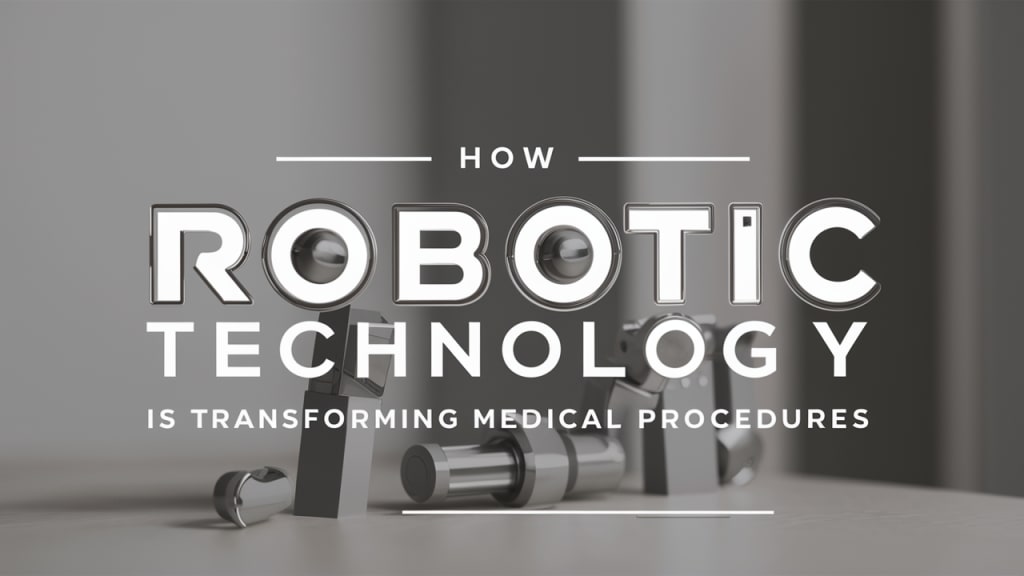Robots in the Operating Room: The Future of Surgery
Exploring How Robotic Technology is Transforming Medical Procedures

Introducton
In recent years, the medical field has seen remarkable advancements in technology. One of the most excited developments are the use of robots in the operating room. Robotic-assisted surgery is revolutionizing how doctors performing complex procedure, offering increased precision, smaller incisions, and quicker recovery times. This article delves into the world of surgical robots, examining how they work, their benefits, and what the future holds for this groundbreaking.
Click Here for Spocket.co: Enhance Your Inventory with Quality Dropshipping Solutions!
Understanding Robotic-Assisted Surgery
Robotic-assisted surgery combined the expertise of skilled surgeons with the precision of advanced robotic system. Unlike traditional surgeries, where a surgeon uses handheld instruments, robotic surgery allows doctor controlling surgical instruments via a console. This setup enhances their ability to perform delicate and complex operations with greater accuracy.
How Robotic Surgery Works
Robotic surgical systems typically consist of three main components:
- Surgeon Console: The surgeon sits at a console, which provides a high-definition, 3D view of the surgical site. The console includes controls that the surgeon manipulate to move the robotic instruments.
- Patient Cart: This component is positioned next to patient and holds the robotic arms equipped with surgical instruments. The arms replicate surgeon's movements in real-time, executing precise and stable actions.
- Vision System: The vision system include a camera that provides a magnified, detailed view of the area being operated on. This enhanced visibility is crucial for performing intricate procedures.
Key Features of Surgical Robots
Robotic surgical systems offer several features that enhance the surgical process:
- Enhanced Precision: Robotic instruments can moved with a degree of precision that surpass human capability, allowing for meticulous manipulation of tissues and organs.
- Minimally Invasive: The robots facilitate minimally invasive surgery (MIS), which involves smaller incisions, less trauma, and faster recovery times compared to traditional open surgery.
- Stable Operation: Robots eliminates the slight tremors in surgeon's hands, ensuring smooth and steady movements during the procedure!
Advantages of Robotic-Assisted Surgery
Robotic-assisted surgery offers numerous benefits for both patients and surgeons. Here are some of the key advantages:
For Patients
- Reduced Trauma: Smaller incisions meaning less damage to surrounding tissues, resulting in less pain and quicker healing!
- Lower Risk of Infection: Minimally invasive procedures reduce the exposure of internal tissues to potential contaminants, lowering the risk of infection.
- Faster Recovery: Patients typically experience shorter hospital stays and quicker returns to normal activities due to the less invasive nature of robotic surgery!
- Reduced Scarring: Smaller incisions led to smaller scars, which are not only cosmetically preferable but also reduce the risk of complications associated with larger wounds!
For Surgeons
- Improved Precision: The enhanced dexterity and control of robotic instruments allow surgeons to perform complex procedures with greater accuracy.
- Better Visualization: High-definition, 3D imaging provides a clearer and more detailed view of the surgical site, helping surgeons make more informed decisions.
- Enhanced Ergonomics: Surgeons operate from a seated position at a console, reducing physical strain and fatigue compared to standing for long hours in traditional surgery.
- Access to Hard-to-Reach Areas: The flexibility of robotic arms enables accessed to areas that are challenging to reach with conventional instruments.
Click Here for Spocket.co: Enhance Your Inventory with Quality Dropshipping Solutions!
Applications of Robotic Surgery
Robotic-assisted surgery in used across a wide range of medical fields. Here are some notable applications:
General Surgery
Robotic systems are widely used in general surgery for procedures such as gallbladder removal, hernia repair, and gastrointestinal surgeries. The precision and minimal invasiveness of robots make them ideal for these common operations.
Cardiac Surgery
In cardiac surgery, robots assist with complex procedures like coronary artery bypass grafting (CABG) and valve repairs. The precision of robotic instruments particularly beneficial in delicate heart surgeries, where every millimeter count.
Gynecology
Robotic surgery has revolutionized gynecological procedures, including hysterectomies and the removal of fibroids. The technology allows for greater precision and control, reducing the risk of complications and improving patient outcomes.
Urology
In urology, robotic systems are used for prostatectomies, kidney surgeries, and bladder procedures. The precision of robots are crucial in these surgeries, where preserving surrounding nerves and tissues is vital.
Orthopedic Surgery
Robotic systems assist in orthopedic surgeries, such as joint replacements and spinal surgeries. The technology enhances the accuracy of implant placement and alignment, leading to better long-term outcomes for patients.
Challenges and Limitations
Despite the many advantages of robotic-assisted surgery, there area also challenges and limitations to considers:
High Costs
One of primary challenges is high cost of robotic surgical systems. These systems required significant investment, which can be a barriers for many hospitals and medical centers, particularly in low-resource settings.
Learning Curve
Surgeons must undergo specialized trainings to operate robotic systems effectively. The learning curve can be steep, and proficiency requires time and practice.
Technical Issues
Like any technology, robotic systems can experienced technical issues or malfunctions. Ensuring proper maintenance and having contingency plans is essential for minimizing disruptions during surgery.
Limited Availability
Currently, robotic-assisted surgery is not available in all medical facilities. Access to these advanced technology is often limited to larger hospitals and specialized centers.
The Future of Robotic Surgery
The future of robotic-assisted surgery looks promising, with ongoing advancements in technology and expanding applications. Here are some trends and developments to watched for:
Smaller and More Affordable Systems
As technology advances, we can expected the development of smaller, more affordable robotic systems. These innovations will make robotic surgery more accessible to a wide range of medical facilities and patients.
Improved Haptic Feedback
Future robotic systems may incorporate enhanced haptic feedback, allowing surgeons to feelings tissues they are manipulated. This development could further improving the precision and safety of robotic-assisted procedures!
Artificial Intelligence Integration
The integration of artificial intelligence (AI) into robotic systems hold great potentially. AI can assist in preoperative planning, real-time decision-making, and postoperative analysis, enhancing the overall efficiency and effectiveness of surgeries.
Expanded Applications
As robotic technology evolves, its applications will continue expanding. We may seen increase use of robots in areas such as neurosurgery, organ transplantation, and emergency surgeries.
Telemedicine and Remote Surgery
Robotic-assisted surgery has the potentials to revolutionize telemedicine and remote surgery. Surgeons could operated on patients located in different parts of the world, providing access to specialized care regardless of geographical limitations.
Case Studies: Success Stories in Robotic Surgery
Several success stories highlight the transformative impact of robotic-assisted surgery:
Johns Hopkins Hospital: Cardiac Surgery
At Johns Hopkins Hospital, robotic-assisted cardiac surgery has significantly improved patient outcomes. The precision of robotic instruments has allowed surgeons to perform complex heart procedures with fewer complications and shorter recovery times.
Mayo Clinic: Gynecological Surgery
The Mayo Clinic has successfully implemented robotic-assisted surgery in its gynecology department. Patients undergoing robotic hysterectomies experiencing less pain, reduced blood loss, and quicker returns normal activities compared traditional surgery.
Cleveland Clinic: Urological Surgery
The Cleveland Clinic has been at the forefront of using robotic systems for prostate surgeries. Their experience showed that robotic-assisted prostatectomies results in better preservation of urinary and sexual function, greatly enhancing patients' quality of life post-surgery.
Click Here for Spocket.co: Enhance Your Inventory with Quality Dropshipping Solutions!
Conclusions
Robotic-assisted surgery is transforming medical field, offering unparalleled precision, improved patient outcomes, and new possibilities for complex procedures. While there are challenges to overcomes, the benefits of robotic surgery are undeniable. As technology continues to advance, we can expect even more innovative applications and improvements, making robotic-assisted surgery a cornerstone of modern medicine.
By embracing this cutting-edge technology, we are not only enhancing the capabilities of surgeons but also improving the overall patient experiences. The future of surgery is here, and it is robotic.
About the Creator
Enjoyed the story? Support the Creator.
Subscribe for free to receive all their stories in your feed. You could also pledge your support or give them a one-off tip, letting them know you appreciate their work.






Comments
There are no comments for this story
Be the first to respond and start the conversation.